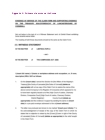Who Do I Contact For The Guidlines Of Restoring A House On The Historical Register
Introduction
If after reading this booklet you are unsure how to proceed, you should either:
- consult a solicitor - The Law Society has a 'find a solicitor' facility on its website
- contact the Citizens Advice Bureau
The Treasury Solicitor is unable to offer any advice or guidance over and above what is set out in this booklet.
Process of resoring a company name to the Register of Companies

If you need to restore a company name to the Register of Companies you will need to follow this process (see also the PDF flowchart diagram above):
- Prepare claim form appendix A.
- Prepare witness statement appendix B.
- Send claim form and witness statement to court.
- Court return the issued claim form.
- Send a copy of the issued claim form and signed witness statement to the Registrar of Companies and the Treasury Solicitor.
- Treasury Solicitor replies, setting out the requirements of the Registrar of Companies.
- Submit required documents to the Registrar of Companies and confirm this in writing to the Treasury Solicitor.
- Confirm in writing to the Treasury Solicitor that the required undertakings will be given to the court.
- Send payment of the costs of the Registrar of Companies to the Treasury Solicitor.
- Prepare witness statement exhibiting the waiver letter.
- Send witness statement to the court.
- Treasury Solicitor sends a draft order and form of undertaking (if appropriate).
- Sign draft order and form of undertaking (if appropriate) and send to the court.
- Court sends sealed copies of order to you.
- Send a sealed copy of the order to the Registrar of Companies.
1. Who makes the application
See Section 1029 of the Companies Act 2006
An application to the court to restore the name of a company to the Register of Companies can be made by one of:
- the Secretary of State
- any former director of the company
- any person having an interest in land in which the company had a superior or derivative interest
- any person having an interest in land or other property:
- that was subject to rights vested in the company
- that was benefited by obligations owed by the company
- any person who but for the company's dissolution would have been in a contractual relationship with it
- any person with a potential legal claim against the company
- any manager or trustee of a pension fund established for the benefit of employees of the company
- any former member of the company (or the personal representatives of such a person)
- any person who was a creditor of the company at the time of its striking off or dissolution
- any former liquidator of the company
- where the company was struck off the register under section 1003 (voluntary striking off), any person of a description specified by regulations under section 1006(1)(f) or 1007(2)(f) (persons entitled to notice of application for voluntary striking off), or by any other person appearing to the court to have an interest in the matter
Except in the case of a personal injury claim the application for restoration must be made within six years of the date of dissolution of the company.
For the purposes of bringing a claim for damages for personal injury an application for restoration can be made at any time.
If a company was struck off under section 652 or 652A of the Companies Act 1985 an application may be made at any time before:
- 1 October 2015 (six years after commencement of these provisions of the Companies Act 2006)
- the expiration of the period of 20 years from publication in the London Gazette of notice under the relevant section whichever occurs first.
The repeal of Sections 651 and 653 of the companies Act 1985 does not affect any application made under those sections before 1 October 2009.
2. Courts that can issue the application
To find out which court has jurisdiction to deal with the application you need to check the registered office of the company at the time it was dissolved.
The Companies Court in London has jurisdiction to deal with the application regardless of where the registered office was situated:
The Companies Court
The Rolls Building
7 Rolls Building
Fetter Lane
London EC4A 1NL
Please note that claims issued in the Companies Court will be automatically transferred to and dealt with by the Central London County Court, which is currently sitting in The Rolls Building for these purposes. During 2015 conduct of these matters will transfer in their entirety to the Central London County Court:
Central London County Court
Thomas More Building
Royal Courts of Justice
Strand
London WC2A 2LL
Certain, but not all District Registries have Chancery jurisdiction and so can deal with all restoration applications. The District Registries that have this jurisdiction are Birmingham, Bristol, Caernarfon, Cardiff, Leeds, Liverpool, Manchester, Mold, Newcastle-upon-Tyne and Preston. Like the High Court these District Registries have jurisdiction to deal with the application regardless of the situation of the registered office.
Certain County Courts can deal with restoration applications provided that:
- the registered office of the company is within its jurisdiction;
- the issued share capital of the company does not exceed £120,000; and
- the court has not been excluded from having winding up jurisdiction.
The index, which shows the County Court for a particular area, can be found on the Court Tribunal Finder website.
The index also shows whether a County Court has winding up jurisdiction by using the work type "Bankruptcy" in the "about your issue" box.
If your local County Court does not have winding up (Bankruptcy) jurisdiction it will be attached to another County Court in the area which has the necessary jurisdiction. This will be shown in the court search results.
3. How to make the application
The application is made by completing a Claim form, a draft of which can be found at Appendix A, under Part 8 of the Civil Procedure Rules 1998.
A draft can be found on the Ministry of Justice website where you would search for the 'Form/leaflet number' N208. This is the standard form that begins the proceedings and should be sent to the relevant court (see 2 above) for issue.
The court fee for issuing the Claim form is currently £280 and the remittance should be made payable to HMCTS (Her Majesty's Courts and Tribunals Service).
4. Evidence needed
You will need to file a witness statement with the court. An outline witness statement can be found at Appendix B, in support of the Claim form. A copy must also be sent to the Registrar of Companies.
The witness statement should contain:
- the reason why the claimant has the right to make the application and under which sub-section of section 1029 of the Companies Act 2006
- the date of incorporation of the Company and under which Act, the Certificate of Incorporation should be exhibited;
- the address of the registered office of the Company
- the basic objects of the Company, the Memorandum and Articles of Association should be exhibited
- the share capital of the Company, both authorised and issued, and, if a member makes the application, the number of shares held by that member. The names of the officers, (director(s) and secretary) of the company
- a full explanation of the circumstances in which and the reasons why the name of the Company was struck off the Register of Companies
- any factors arising with regard to the time limits in S1030 of the Act
- the date on which the Registrar of Companies struck the name of the Company off the Register and the date on which notice thereof was published by him in the "London Gazette"
- where the claimant is a director or member of the company, the financial position of the company at the time of its dissolution and (if different) its financial position at the time it is restored
- that the sole reason for seeking restoration is to recover the funds in a company bank account, transfer a property registered in the name of the company etc. and what is intended for the company and its assets and liabilities when restored
- any other information that explains the reason for the application and to the future of the company if restored
Please see the Companies Court Practice Note issued on 12 November 2012 attached to this Guidance Note for confirmation of what evidence the court requires.
5. How to issue the claim form
Send 3 copies of the Claim form, the supporting evidence with an original signature and the court fee to the court. Remember to keep copies of all the documents.
6. How to serve the claim form and supporting evidence
A copy of the Claim form bearing an original court seal and supporting evidence must be served on:
The Registrar of Companies
Restoration Section
Companies House
Crown Way
Cardiff CF14 3UZ
DX: 33050 Cardiff
The Treasury Solicitor
Government Legal Department
102 Petty France
Westminster
London SW1H 9GL
DX 123243 Westminster 12
Fax: 020 7210 3119
If the registered office of the company was in Lancashire or Cornwall the Claim form and supporting evidence must also be served on the Solicitor to the Duchy of Lancaster / Duke of Cornwall:
Messrs Farrer & Co
66 Lincoln's Inn Fields
London WC2A 3LH
DX: 32 Chancery Lane
Tel: 020 3375 7000
Fax: 020 3375 7001
The Registrar, the Government Legal Department and Messrs Farrer & Co will all accept service by post; recorded delivery is recommended. The Registrar will also accept delivery by hand during normal office hours at Companies House, Cardiff or at:
Companies House
Ground Floor
80 Petty France
Westminster
London SW1H 9EX
The Treasury Solicitor or the Solicitor for the Duchy of Lancaster / Duke of Cornwall will write to you stating that no objection will be raised by the Crown to the order being made. The Solicitor for the Duchy of Lancaster/Duke of Cornwall will require a fee for this letter which you will need to clarify with them.
Please Note: the evidence in support of the claim and either:
- (if the matter is being dealt with in the Central London County Court in London) the waiver letter from the Treasury Solicitor, Duchy of Lancaster / Duke of Cornwall
- evidence exhibiting that letter (if the matter is being dealt with in any other court) must be filed with the court as soon as possible and no later than two clear working days before the hearing.
See the Practice Note at Appendix D for Companies Court procedure below.
7. Who attends the hearing
You may attend in person or be represented by an advocate.
Courts have indicated that accountants do not have a right of audience in matters of this nature. The Companies Court in London has adopted a practice of attempting where possible to deal with these cases by consent without a formal hearing, see the new Practice Note issued on 12 November 2012 at Appendix D. Some District Registries and County Courts adopt a similar practice. The Central London County Court in London has indicated that it will grant one adjournment and then if the matter is not dealt with in advance of or at the adjourned hearing, the application will be dismissed.
8. About costs and penalties
The costs of the Registrar of Companies, who is represented by The Government Legal Department, are normally met by the Claimant. These costs will usually be in the region of £300. The company may also have to pay the statutory penalty for late filing for any accounts delivered outside the period allowed by the Companies Act. Where penalties are applicable the Registrar will send a penalty notice to the Company's registered office once the company has been restored to the Register. For further information please refer to the guidance notes on Companies House website.
9. What happens when the order has been made
An office copy of the order, with an original court seal (stamp), must be delivered to the Registrar by the Claimant. It is recommended that the order be sent by recorded delivery or delivered by hand, see section 6 above. A company is regarded as being restored when the order is delivered to the Registrar. The company is then regarded as having continued in existence as if it had not been struck off and dissolved.
If an Order is made without the consent of the Registrar of Companies or is in a form that he is unable to accept, he may instruct the Government Legal Department to apply to set it aside, or agree that an Order be made in its place which he is able to accept.
10. Recovery of company funds
To recover any Company funds which may have passed to the Crown on dissolution you should contact either the Treasury Solicitor Bona Vacantia Division:
Treasury Solicitor
Government Legal Department
Bona Vacantia Division
PO Box 70165
London
WC1A 9HG
DX: 123240 Kingsway
Tel: 020 7210 4700 (press option 1)
or if the registered office of the Company was in Lancashire or Cornwall:
Messrs Farrer & Co.
66 Lincolns Inn Fields
London WC2A 3LH
DX: 32 Chancery Lane
Tel: 020 3375 7000
Fax: 020 3375 7001
See also the Government Legal Department's Department Bona Vacantia Division's guidelines on repaying funds:
11. Useful address
Details of a person's employment history can be obtained from:
HM Revenue & Customs
National Insurance Contributions Office
SSA BP1002A
Benton Park View
Newcastle upon Tyne NE981ZZ
12. Forms and guidance
N208 Claim form
N208A and N208C Notes for Claimant
N210 Acknowledgment of Service
13. Useful web sites
Companies House
Government Legal Department
Government Legal Department Bona Vacantia Division
Messrs Farrer & Co
Appendices





Who Do I Contact For The Guidlines Of Restoring A House On The Historical Register
Source: https://www.gov.uk/guidance/company-restoration-guide
Posted by: mendezmagning1940.blogspot.com

0 Response to "Who Do I Contact For The Guidlines Of Restoring A House On The Historical Register"
Post a Comment